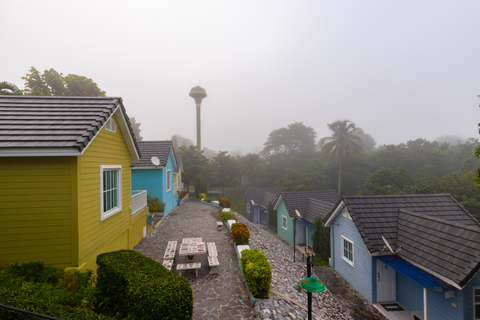
History of Bungalows
In the 19th century, when Britain was the rule over India, British officers would make their homes in small “banglas.” With low, thatched roofs and large verandas, these homes imitated the style of the countryside homes of the people of southeast Asia. In the 1860s, this style made its way to England, becoming popular on the seaside as second homes for the upper class. After their popularity grew in Britain, bungalows were first introduced to the USA in California. This is when people began to use them as year-round homes. Their availability as a catalog home from retailers like Sears helped their numbers to surge. The popularity of the bungalow in the early 1900s coincided with the arts and crafts movement. These paired events caused the bungalow to receive many of its characteristics from this period.
Characteristics of Bungalow Houses
Classic characteristics of bungalows mimic the original banglas, with the same verandas and low roofs. The verandas are noticeably wide, with windows set back, to give some privacy to the home’s inhabitants. Bungalows are characteristically small, with no more than one and a half stories. The average size of this home is 1,800 square feet, with two to three bedrooms. You will often find these homes have dormer windows or windows placed high to make them feel more spacious.
Many Different Variations
Depending on the region, you will find different variations of bungalows. As they originated in California after their introduction to the USA, the most popular style is the “California Bungalow.” The Craftsman style most heavily influences these, with exposed beams, built-ins, and overhanging eaves. Another trendy style was the Chicago style, with red brick exteriors. You might also recognize the “mission” style, with its stucco exterior and tile roofs.
Pros and Cons
Some benefits of bungalows are readily apparent. Due to their size, they have lower utility and energy use. Their floorplan is suitable for young families as parents can keep their children close to them. It’s also a great home to age-in-place. It’s one level is usually near to the ground, allowing easy access into the house.
Although bungalows were incredibly popular in the early 1900s, their popularity has decreased since, due to the favorability of larger homes and more open layouts. Although they hold their value, their cost per square foot is higher than similar houses due to their broader foundation and roof. They also pose more of a security issue, as the majority of the living space is accessible to the outdoors. Although charming, the overall age of bungalows is increasing, thus creating more maintenance costs in the long run.
A Great Choice of Home
Bungalows have a great history and have been loved by many generations throughout time. They remain a popular home to be built or purchased even today. Whether starting out as a homeowner, a young family, or an elderly couple, those wanting a smaller home can find a great option in the classic bungalow.


